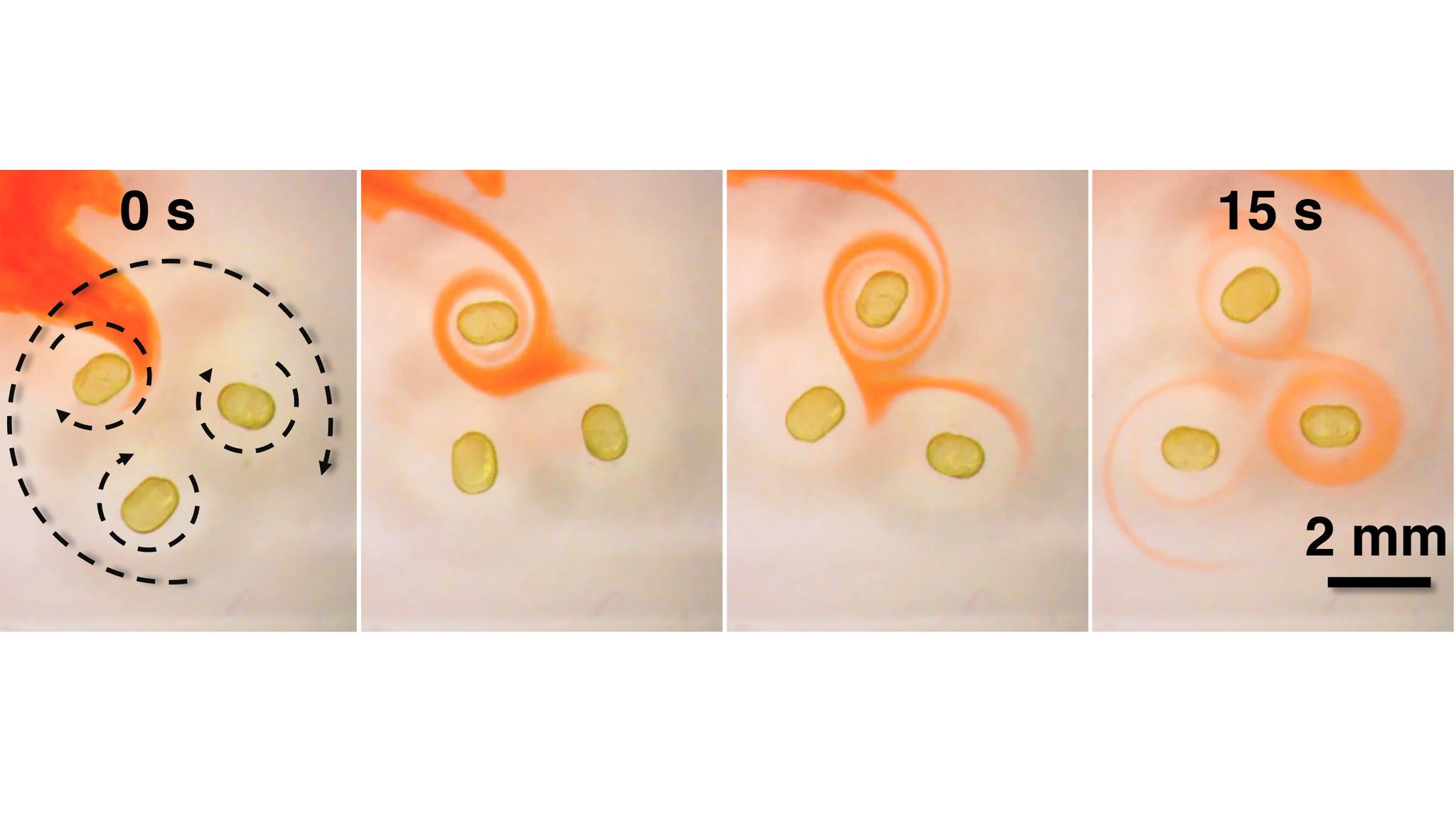In a first, researchers have permanently magnetized a liquid
The new material could have applications in robotics and medicine.

An oil-soluble dye reveals how liquid magnets rotate when exposed to a magnetic field. Image Credit: Xubo Liu, Berkeley National Lab
Scientists have always loved fiddling with the laws of attraction—often with alluring results. The latest breakthrough? A malleable, free-flowing fluid with all the essential properties of your solid, garden-variety magnet.
“We’ve made a new material that has all the characteristics of an ordinary magnet, but we can change its shape, and conform it to different applications because it is a liquid,” study author Thomas Russell, a polymer scientist at the University of Massachusetts, Amherst told Knvul Sheikh at The New York Times. “It’s very unique.”
The magnetic marvel, reported in a study published today in the journal Science, marks the first time researchers have devised a stable liquid magnet that retains its properties even after it’s been sloshed and squished.
Russell’s team isn’t the first to attempt this fluid feat. Half a century ago, NASA scientists realized they could magnetize slurries of solid magnetic nanoparticles suspended in liquid by exposing them to a strong magnetic field. The effect, however, disappeared once the magnetic field was taken away.
In their experiment, Russell and his colleagues also mixed nanoparticles into water—but first, they injected the nanoparticles into tiny droplets containing toluene, a liquid that doesn’t dissolve in water, and a soap-like additive. The soap-like material caused nanoparticles to crowd together on the surface of each toluene droplet, forming a shell that encased more nanoparticles bopping around a free-flowing liquid interior. Suspended in water, the oil-like droplets yielded what basically amounted to a nanoparticle vinaigrette.
And when the researchers temporarily exposed the liquid to a solid magnet, the droplets magnetized—and stayed that way.
Russell and his colleagues aren’t totally sure why the effect is so permanent, reports New Scientist’s Leah Crane. There’s likely some contribution from the fact that nanoparticles are constantly jostling for space at the surface of each toluene droplet, making it easier to hold onto a magnetic field.
“But the part I don’t fully understand,” Russell told Phil Dooley at Cosmos, “[is why] if you measure its [magnetic] field, it’s as if every particle inside the droplet is participating, even the ones in the liquid.”
What’s more clear, though, is that the new material is easily manipulated: It can be pushed and poured into a variety of vessels, or massaged and morphed into different configurations. And, because it’s magnetic, researchers can remotely control the movements of the liquid—and, perhaps, the device it’s held in—by simply applying an external magnetic field. Materials like these could someday power the motions of soft robots, or even precisely deliver drugs into the human body, Sheikh reports.
Those applications are a long way off, and there’s still a lot to learn about the mysterious liquid itself. But that’s no cause for stress: Magnets, too, can go with the flow.



